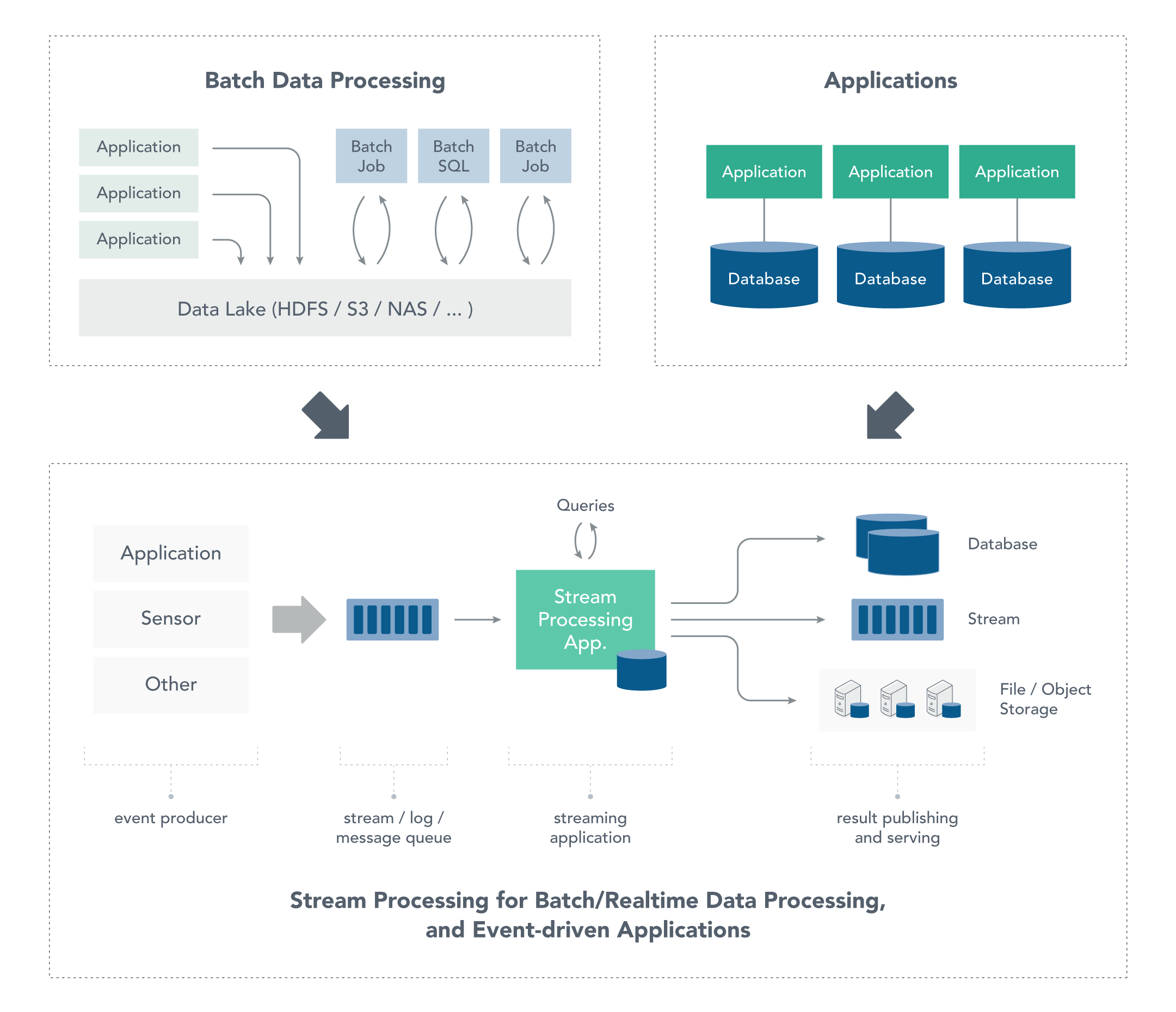标签:this tis ide cti compare events require hubs targe
Ververica was founded by the original creators of Apache Flink®, and we’ve spent a long time solving problems in the stream processing space. In this introductory write-up, we’ll provide our perspective on stream processing and where Apache Flink fits in.
Stream processing is the processing of data in motion, or in other words, computing on data directly as it is produced or received.
The majority of data are born as continuous streams: sensor events, user activity on a website, financial trades, and so on – all these data are created as a series of events over time.
Before stream processing, this data was often stored in a database, a file system, or other forms of mass storage. Applications would query the data or compute over the data as needed.
Before stream processing: a data-at-rest infrastructure
Stream Processing turns this paradigm around: The application logic, analytics, and queries exist continuously, and data flows through them continuously.
Upon receiving an event from the stream, a stream processing application reacts to that event: it may trigger an action, update an aggregate or other statistic, or “remember” that event for future reference.
Streaming computations can also process multiple data streams jointly, and each computation over the event data stream may produce other event data streams.
A stream processing infrastructure
The systems that receive and send the data streams and execute the application or analytics logic are called stream processors. The basic responsibilities of a stream processor are to ensure that data flows efficiently and the computation scales and is fault tolerant.
Apache Flink is a powerful, mature, open source stream processing framework that solves these challenges.
The stream processing paradigm naturally addresses many challenges that developers of real-time data analytics and event-driven applications face today:
Stateful stream processing is a subset of stream processing in which the computation maintains contextual state. This state is used to store information derived from the previously-seen events.
Virtually all non-trivial stream processing applications require stateful stream processing:
Stateful stream processing
Conceptually, stateful stream processing brings together the database or key/value store tables and the event-driven / reactive application or analytics logic into one tightly-integrated entity.
The deep integration between the state and execution of the application / analytics logic results in very high performance, scalability, data consistency, and operational simplicity.
Stateful stream processing requires a stream processor that supports state management. Apache Flink has world-class support for stateful stream processing, including the ability to handle very large state size, elastic re-scaling of stateful streaming programs, state snapshots (for versioning and application updates), and upgrade and schema evolution features.
You probably noticed that we mentioned both real-time data processing / analytics and event-driven applications in previous sections. Are those not two different domains, with processing and analytics implemented via frameworks like Hadoop or SQL warehouses and applications implemented via application frameworks and databases?
Current approaches to data processing/analytics and event-driven applications have much in common. For analytics to produce results in real-time or near real-time, a system must continuously compute and update results with each record or event.
Modern applications and microservices also operate in an event-driven or “reactive” fashion, meaning their logic and computation is triggered by events (where events are generated, for example, by a user interacting with a website).

Stream processing unifies applications and analytics. This simplifies the overall infrastructure, because many systems can be built on a common architecture, and also allows a developer to build applications that use analytical results to respond to insights in the data–to take action–directly.
For example:
Interested in learning more? Read up on Apache Flink and its core features, or visit our blog to see real-world use cases from Apache Flink users.
Flink:What is stream processing?
标签:this tis ide cti compare events require hubs targe
原文地址:https://www.cnblogs.com/felixzh/p/13038618.html